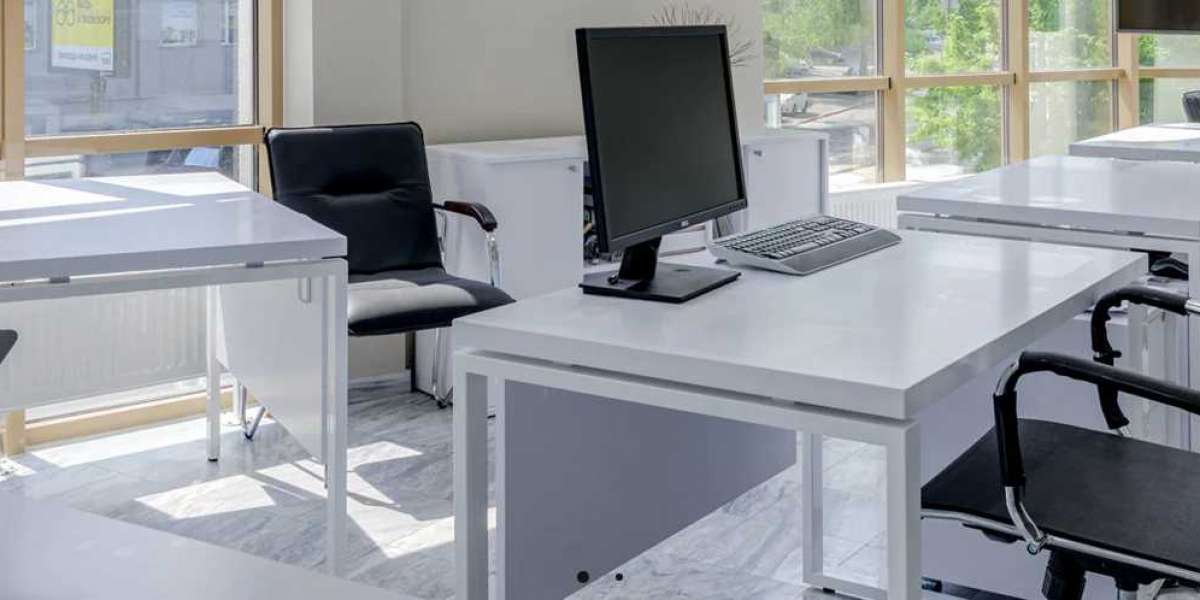Choosing the right office furniture for a collaborative environment involves selecting pieces that promote teamwork, communication, and flexibility while maintaining comfort and functionality. Here's a guide to help you choose the ideal furniture for a collaborative workspace:
1. Understand Your Space and Needs
- Assess the Layout: Consider the size and shape of your office space, and identify areas dedicated to collaboration, such as meeting rooms, open workstations, and breakout areas.
- Identify Needs: Determine the types of collaboration that will occur in the space, such as brainstorming sessions, team meetings, or casual discussions, to choose the appropriate furniture.
2. Opt for Flexible and Modular Furniture
- Modular Seating: Choose seating options that can be easily rearranged to accommodate different group sizes and meeting types. Modular sofas and chairs with movable components allow for quick reconfiguration.
- Multi-Functional Tables: Look for tables that can serve multiple purposes, such as folding tables, nesting tables, or tables with adjustable heights, to adapt to various activities.
3. Prioritize Comfort and Ergonomics
- Ergonomic Chairs: Provide comfortable, ergonomic chairs that support good posture, especially for longer meetings or brainstorming sessions. Chairs with adjustable features are ideal for accommodating different users.
- Supportive Seating: Consider incorporating lounge-style seating with plush cushions and supportive backs for informal meetings and brainstorming sessions.
4. Enhance Communication with Open Layouts
- Open Workstations: Use open workstations without high partitions to encourage communication and visibility among team members. Consider bench-style desks or long tables that foster a sense of community.
- Breakout Areas: Designate breakout areas with comfortable seating and small tables where employees can gather for spontaneous discussions or quick huddles.
5. Include Technology-Integrated Furniture
- Tech-Ready Tables: Choose tables with built-in power outlets, USB ports, and data connections to support technology use during meetings and collaborations.
- Interactive Displays: Consider incorporating furniture with integrated screens or projectors for presentations and group work, enhancing the collaborative experience.
6. Provide Versatile Meeting Spaces
- Collaborative Tables: Invest in tables designed for group work, such as round or oval tables that promote equality and visibility among participants.
- Huddle Rooms: Create small meeting rooms equipped with appropriate furniture for quick, focused discussions, ensuring privacy and reducing noise in open areas.
7. Foster Creativity with Inspiring Designs
- Colorful Accents: Use furniture with vibrant colors or interesting designs to create a stimulating environment that encourages creativity and innovation.
- Writable Surfaces: Consider tables or walls with writable surfaces where team members can jot down ideas, make notes, or sketch during collaborative sessions.
8. Ensure Privacy with Acoustic Solutions
- Acoustic Panels: Incorporate acoustic panels or dividers to reduce noise distractions and maintain privacy in open collaborative areas.
- Private Pods: Use phone booths or small pods for one-on-one discussions or focused work, providing a quiet space amid a busy collaborative environment.
9. Optimize for Accessibility and Inclusivity
- Accessible Furniture: Choose furniture that accommodates all employees, including those with disabilities, ensuring inclusivity in collaborative spaces.
- Adjustable Features: Provide furniture with adjustable heights and sizes to cater to diverse needs and preferences.
10. Balance Aesthetics with Functionality
- Consistent Style: Maintain a consistent design style throughout the office to create a cohesive and professional look. Choose furniture that complements the overall aesthetic while supporting collaborative functions.
- Quality Materials: Select furniture made from durable, high-quality materials that can withstand frequent use and movement, ensuring longevity and reliability.
Conclusion
Selecting the right office furniture for a collaborative environment involves balancing flexibility, comfort, and technology integration while fostering creativity and inclusivity. By choosing modular and versatile pieces that support communication and adaptability, you can create a dynamic and productive workspace that encourages teamwork and innovation. Consider the unique needs of your team and the specific activities that will take place in the space to design a collaborative environment that enhances both employee satisfaction and productivity. ☺








